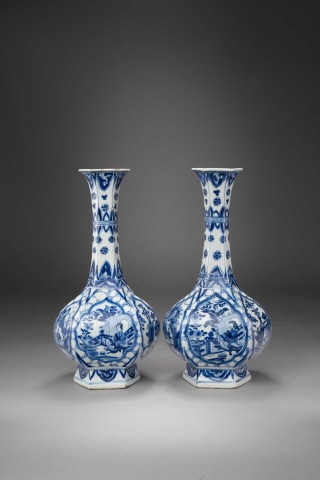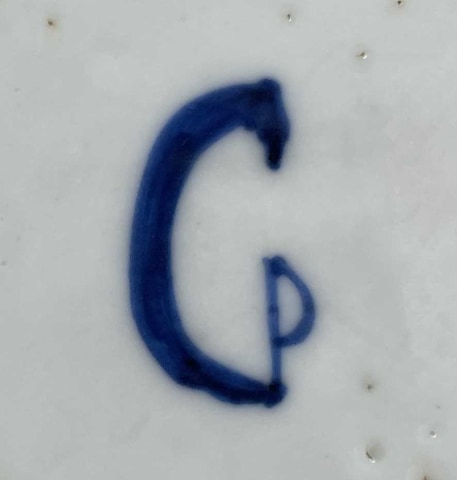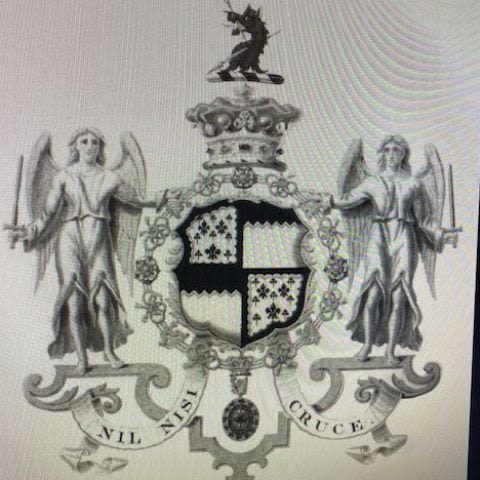A PAIR OF UNUSUAL CHINESE BLUE AND WHITE 'G' MARKED BOTTLE VASES, Kangxi ( 1662-1722 )
Height: 20.1cm
BJ05
BJ05
Further images
Each of hexagonal section, painted with six cartouches reserved against a cracked-ice ground, depicting ladies at leisure in a fenced garden, antiques and scholars with their attendants holding qins, the...
Each of hexagonal section, painted with six cartouches reserved against a cracked-ice ground, depicting ladies at leisure in a fenced garden, antiques and scholars with their attendants holding qins, the necks decorated with bands of lappets and ruyi-heads, all raised on high splayed feet, each with a 'G' mark on the base.
Provenance
From the collection of the 9th Marquis of Waterford, Henry Nicholas de la Poer (b.1958) of Curraghmore, County Waterford.Literature
For many years experts have been pondering the 'G' letter on the bottom of this type of Chinese porcelain. It is only found on Kangxi period blue and white and famille verte objects of both European and Islamic form.Debate has surrounded whether it is a Roman letter 'G' or an Arabic character. There is a further theory that it could be a Persian Farsi character; when rotated 90 degrees. 'G' is a Farsi character meaning 'prosperity'.
Although the 'G' mark has not been identified with any particular person, it has been suggested that the mark was used to distinguish pieces made for a specific European trader, or perhaps for a member of the Dutch East India Company. Porcelain with this mark is usually of a high quality, reinforcing the view that the 'G' mark may suggest these items were custom made for an individual.
Christian Jörg in his work, Chinese Ceramics in the Collection of the Rijksmuseum, Amsterdam: The Ming and Qing Dynasties, supports this theory citing the example of so-called Japanese 'apothecary bottles' which also make use of a set of initials encircled on the body. See also RL Hobson, The Later Ceramic Wares of China, London, p.143 for a further discussion of these marks.
There is a famille verte teapot in the Groninger Museum in the Netherlands which also bears this unusual "G"-mark on its base which is illustrated in Christiaan J.A. Jorg, Famille Verte Chinese Porcelain in Green, Enamels, Groninger Museum, 2011, p. 132, pl. 120.
See also the Lady Lever Art Gallery, Liverpool, collection no. LL 6450-51-52 for another related example.






